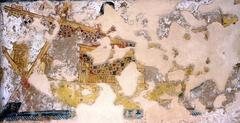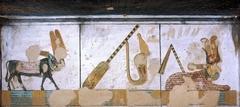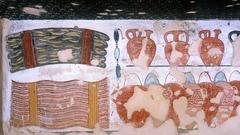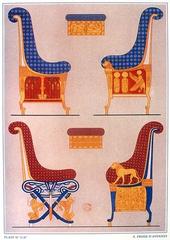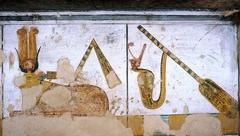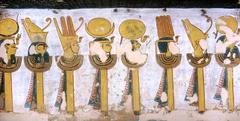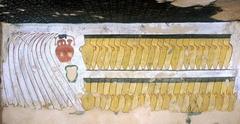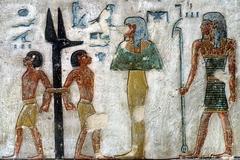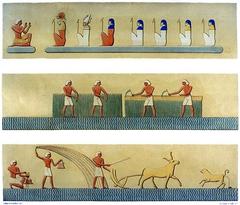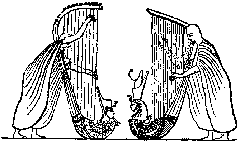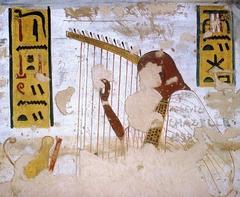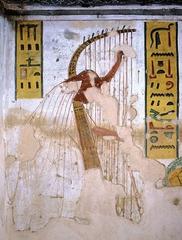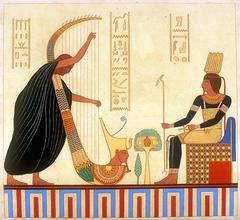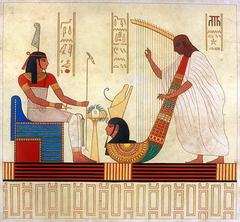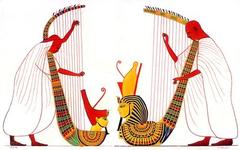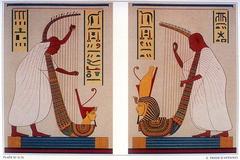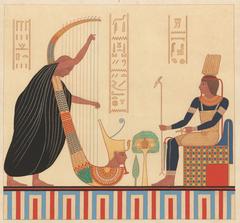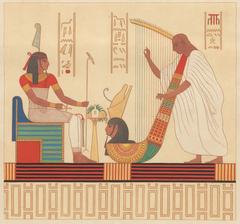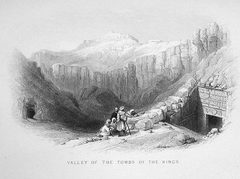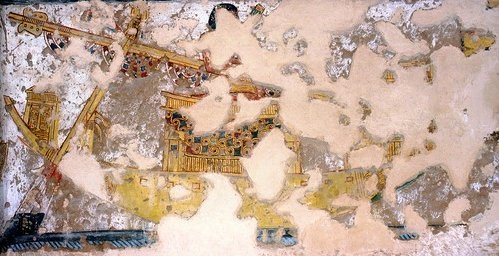
KV11 Tomb of Ramesses III: Visiting Hours, Tickets, and Travel Guide in Luxor, Egypt
Date: 14/06/2025
Introduction
The KV11 Tomb of Ramesses III is a highlight of Luxor’s Valley of the Kings, renowned for its monumental architecture, intricate wall paintings, and its role as the final resting place of Egypt’s last great New Kingdom pharaoh. Stretching nearly 188 meters into the Theban cliffs, KV11 is not only a remarkable achievement of ancient engineering but also a vibrant gallery of funerary art and ritual texts. Visitors to this extraordinary site can witness firsthand the grandeur of Ramesses III’s reign, the evolution of royal tomb construction, and the ongoing international efforts to preserve this cultural treasure. This guide provides comprehensive visitor information—including opening hours, ticketing, accessibility, conservation efforts, and travel tips—to help you plan an enriching and respectful visit.
For official updates, consult the Official Luxor Tourism Board, the Ramesses III Project, and trusted travel guides like Lonely Planet.
Table of Contents
- Overview: KV11 and Its Historical Context
- Architecture and Artistic Highlights
- Visiting KV11: Hours, Tickets, and Practical Information
- Conservation and Preservation Efforts
- Cultural Etiquette and Visitor Guidelines
- Accessibility and Facilities
- Nearby Luxor Attractions
- Frequently Asked Questions (FAQ)
- Visuals and Media
- References and Further Reading
Overview: KV11 and Its Historical Context
KV11’s construction began under Setnakht, founder of Egypt’s Twentieth Dynasty. An accidental breach into an existing tomb (KV10) caused Setnakht to abandon the site and begin anew elsewhere, leaving KV11 incomplete until his son, Ramesses III, took over. Ramesses III expanded and completed KV11, introducing a distinctive bend in the tomb’s axis to avoid further intrusion into KV10, resulting in a unique architectural layout. The tomb was opened in antiquity, with famed visitors such as James Bruce documenting its remarkable features in the 18th century (Lonely Planet).
Architecture and Artistic Highlights
Layout and Structure
KV11 is among the Valley’s longest tombs, comprising a succession of corridors, pillared halls, and side chambers. The tomb’s famous “dog-leg” bend is a direct response to the earlier construction mishap, and the main burial chamber is supported by eight pillars and richly decorated with religious iconography (Lonely Planet).
Wall Decorations and Iconography
The tomb’s walls feature some of the most vivid and well-preserved paintings in the Valley, including:
- Litany of Ra and Book of Gates: Ritual texts designed to guide the king through the underworld.
- Secular Scenes: Unique depictions of foreign tribute, imported pottery, the royal armory, and the famous scene of blind harpists—one of the earliest-known portrayals of musicians with disabilities in Egyptian art (Lonely Planet).
- Artistic Techniques: Executed in sunken relief and painted in vibrant hues, the artwork remains a testament to New Kingdom craftsmanship.
Notable Artifacts
Ramesses III’s sarcophagus was removed in antiquity, with the box now in the Louvre and the lid in the Fitzwilliam Museum. His mummy, found in the Deir el-Bahari cache, is displayed in Cairo’s Egyptian Museum.
Visiting KV11: Hours, Tickets, and Practical Information
Opening Hours
- Winter: 6:00 am – 5:00 pm
- Summer: 6:00 am – 4:00 pm
- Hours can vary seasonally or due to holidays; check with the official tourism website for up-to-date information.
Tickets
- Standard Valley of the Kings Ticket: Grants access to three tombs, usually including KV11. As of 2025, prices range from 600–750 EGP for adults, with discounts for students and children (Egypt Planners).
- Photography Permit: Approximately 300 EGP, required for non-flash photography inside the tomb.
- Tickets are purchased at the main visitor center; keep your ticket accessible as it will be checked at each tomb entrance.
Best Times to Visit
- Arrive early (by 8:00 am) to avoid crowds and benefit from cooler temperatures.
- The cooler months (December–February) are most comfortable for exploring underground tombs.
- Guided tours with Egyptologists are highly recommended for a deeper understanding of the tomb’s significance.
Getting There
- The Valley of the Kings is around 7 km from central Luxor, accessible by taxi, private car, or organized tour.
- An electric shuttle is available from the visitor center to the tomb area (Intrepid Scout).
Conservation and Preservation Efforts
KV11 is the focus of significant international conservation initiatives. The Ramesses III Project employs high-resolution documentation, 3D scanning, and environmental monitoring to safeguard the tomb’s fragile art and structure. Restoration specialists use non-invasive methods to stabilize paintings and mitigate damage from humidity and salt infiltration. Some areas may be temporarily closed to visitors during restoration, so always check for updates before your visit.
To help preserve KV11:
- Do not touch or lean on the walls.
- Avoid flash photography.
- Stay on marked pathways and respect barriers.
Cultural Etiquette and Visitor Guidelines
- Maintain a quiet, respectful demeanor; KV11 is both an archaeological wonder and a sacred burial site.
- Tipping is customary for guards who offer assistance, but not required for basic services (Her Asian Adventures).
- Modest dress is recommended in keeping with local customs.
Accessibility and Facilities
- The approach to KV11 is relatively flat, but interior passageways can be narrow and uneven, limiting full wheelchair accessibility.
- Restrooms, a café, and a souvenir shop are available at the main visitor center; no facilities are inside the tomb area.
- Wear sturdy shoes and bring water, hats, and sunscreen.
Nearby Luxor Attractions
Enhance your visit by exploring other sites on Luxor’s West Bank:
- Temple of Hatshepsut
- Colossi of Memnon
- Valley of the Queens
- Mortuary Temple of Ramesses III (Medinet Habu) Combined tours are widely available (Egypt Planners).
Frequently Asked Questions (FAQ)
Q: What are KV11’s opening hours?
A: 6:00 am – 5:00 pm in winter; 6:00 am – 4:00 pm in summer. Times may vary, so confirm before your visit.
Q: How much are tickets?
A: General admission is approximately 600–750 EGP for adults, including three tombs; photo tickets are about 300 EGP.
Q: Is photography allowed?
A: Only with a valid photo ticket, and never with flash.
Q: Is KV11 accessible for visitors with disabilities?
A: The approach is accessible, but interior corridors are narrow and may be challenging for those with mobility issues.
Q: How long should I plan for a visit?
A: Most visitors spend 30–45 minutes in KV11; allow extra time for crowds or guided tours.
Visuals and Media
Enhance your visit by viewing high-quality images and virtual tours online. Use alt tags such as “KV11 visiting hours” and “Visiting KV11 tomb” for accessibility. Interactive maps and official resources are recommended for pre-visit planning.
References and Further Reading
- Official Luxor Tourism Board
- Lonely Planet: Tomb of Ramses III (KV11)
- Ramesses III Project
- Egypt Uncovered: Valley of the Kings
- Intrepid Scout: Visit Valley of the Kings
- Egypt Planners: Valley of the Kings
- Her Asian Adventures: Valley of the Kings Tombs
- Egypt Tourism Official
- Earth Trekkers: Best Tombs to Visit
Conclusion
KV11, the Tomb of Ramesses III, stands as a lasting testament to the artistry, engineering, and cultural significance of ancient Egypt’s New Kingdom. By following the latest visitor guidelines, supporting conservation efforts, and respecting the sacred nature of this monument, travelers help ensure that KV11 remains accessible and awe-inspiring for generations to come. Plan your journey with confidence, and step into the world of Egypt’s great pharaohs.
